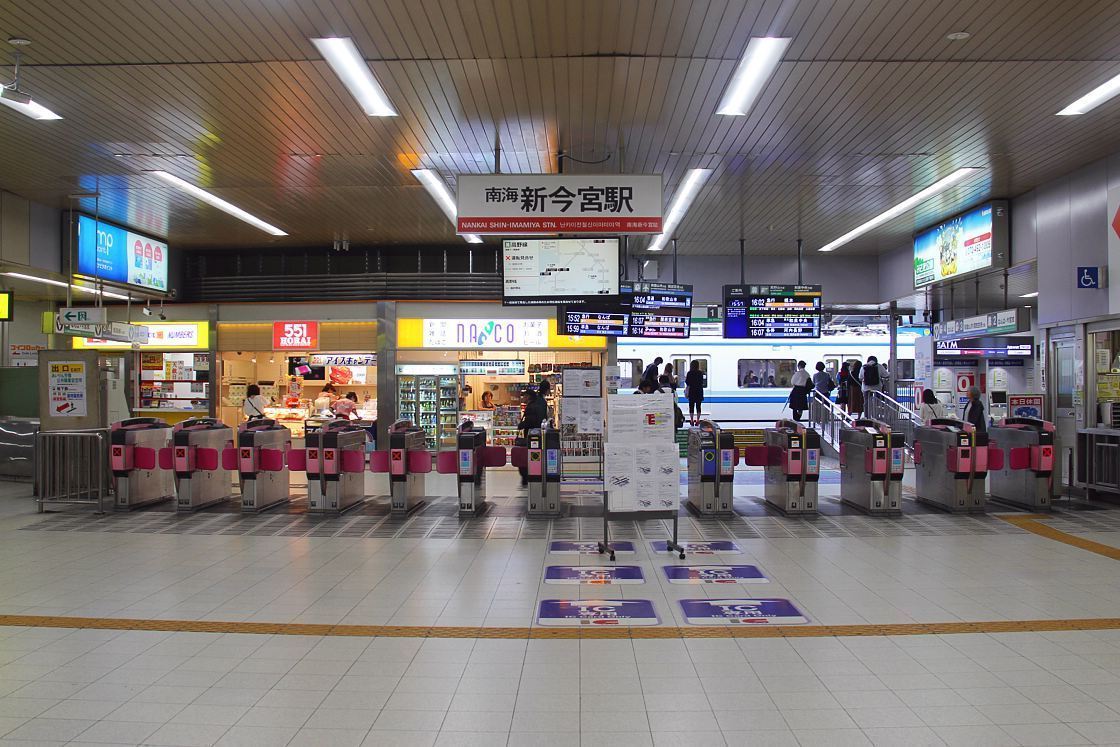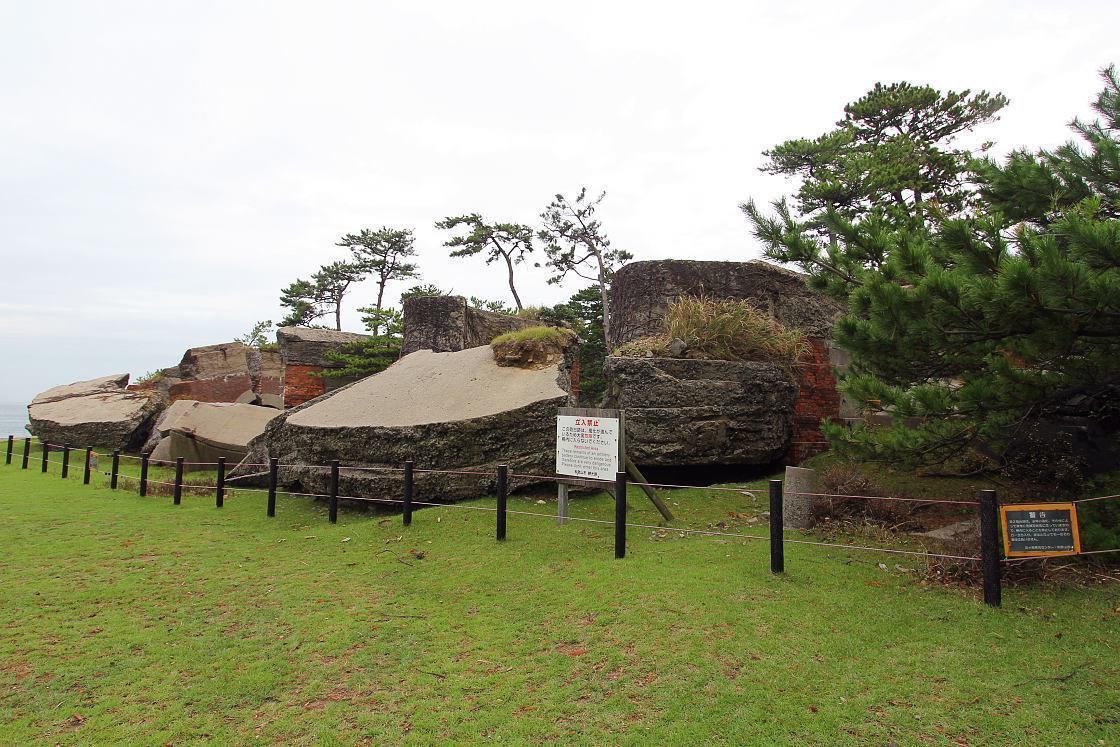Exploring Ruins on Tranquil Tomogashima Island
Just off the coast of Wakayama Prefecture the island of Tomogashima rises out of the Seto Inland Sea as a jewel of rolling hills and lush forests, all protected by majestic, craggy coastlines. The small island, that is easily reachable from nearby Osaka, also boasts a multitude of old ruins, and this combination of beautiful nature permeated by striking vestiges of the past makes it an excellent place to visit for those staying Kansai's largest metropolis.
The island, which is technically called Okinoshima but more commonly referred to by the name of the island chain in which it belongs, has an interesting history. During the Meiji Period (1868-1912), the island was selected as an outpost from which to defend the Bay of Osaka from unwanted foreign visitors.

The result was the construction of a string of fortifications on the island alongside other installations including a navy surveillance center and an impressive lighthouse. Off-limits to civilians until after World War Two, the island today is open for the public to explore and has become a popular spot for hiking, picnicking and even camping in the mist of stunning nature, history and urban decay.
I began my journey at Shin-Imamiya Station in central Osaka and from there boarded a limited express on the Nankai Line to Wakayamashi, where I switched to a special Medetai train on the Nankai Kada Line to the terminus at Kada Station.



Literally meaning 'auspicious seabream', the name Medetai alludes to Kada's signature food and also to good fortune, which is reflected in the colorful, fun-loving decor of the trains' exteriors and interiors. The trains are intended to make passengers feel relaxed and happy, and it certainly did the trick, as by the time I arrived in Kada I was and raring to go after my relaxing journey through Wakayama Prefecture's charming countryside.
The port from where the ferry to Tomogashima is boarded is around 20 minutes' walk from Kada Station through the quaint town's sleepy backstreets. Arriving near the port with some time to kill, I made the five-minute stroll over to Awashima Shrine, a seaside shrine notable for the plethora of dolls that are placed around its grounds.


Every year on March 3, the shrine hosts the Hina Nagashi festival in which thousands of dolls are cast out to sea on boats, in prayer for female fertility and safe childbirth. Accordingly, hundreds of dolls stand at the shrine, many of which have been dedicated from all over Japan. Walking among the dolls, which took many different forms and bore various expressions, I found the shrine to be a very pleasant and unique place to visit to kick off the day's exploration.



After making my way to the port I bought my ticket and boarded the small ferry that would transport the other passengers and I to Tomogashima. Outside of winter (when the ferry only operates on weekends and public holidays), the ferry makes multiple round trips between the mainland and the island every day except Wednesdays (Tuesdays and Wednesdays in March). The cost for a return ticket is 2000 yen.
The crossing takes around 20 minutes and provides for a fun and scenic, if slightly bumpy, experience. I arrived on Tomogashima and, having made note of the ferry times so as not to miss the last one back to the mainland, began my exploration of this isle of wonders.



A network of trails weaves around the island and leads visitors to many of the sights on offer. In all, walking the island's paths and taking in the sights takes about three hours at a leisurely pace, and although predominantly gentle and even, the route does include some relatively steep and uneven areas. Upon leaving the Nonaura Pier (where the ferry docks), I began to make my way around the island to my first stop at the Second Fort Ruins.
These redbrick ruins are nestled on a corner of the island overlooking the surrounding water and despite seeming to be slowly losing their battle with nature, make it easy to imagine how impressive this fort would have been at the time of its construction. For safety reasons, visitors must remain behind a rope away from the dilapidated structure, but nonetheless this first taste of Tomogashima's ruins left me wanting to see more.




A short walk further along the island's winding paths, I came to the next impressive feature of the island, Tomogashima Lighthouse. The lighthouse, which was built in 1872, stands impressively on the crest of a hill on the island's western tip, and in contrast to many other man-made structures here remains in operation to alert vessels of the island's presence.
Near the lighthouse are multiple foxholes where presumably gun-operating soldiers would have been stationed in decades past. The contrast between the working maritime lighthouse and the retired military installations was quite interesting.



Adjacent to the Tomogashima Lighthouse stand the First Fort Ruins which, unlike the Second Fort Ruins, are open for visitors to enter. To do so I descended the hill a little and walked through one of the island's numerous tunnels to arrive in a redbrick courtyard.
With echoes of decades past seemingly reverberating from the solid walls, this area is seemingly faring significantly better than the Second Fort Ruins, and has a tranquil yet slightly eerie atmosphere. After taking in the First Fort Ruins, it was back to the path to continue my exploration of this intriguing island.



From the First Fort Ruins I followed the pathways further around the island, taking in breathtaking vistas from various viewpoints. After a short climb up another hill I came to one of the most intriguing of all the island's features, the Navy Listening Station. Perched near a cliff in the island's southwestern corner, this building is open to enter, its low ceiling and tarnished concrete walls making the spot eerily beautiful. I spent some time exploring the building's rooms and then made my way back to rejoin the main path.




It was now time for the last of the day's viewing spots, Tomogashima's Third Fort Ruins. Located deep in the island's interior, these ruins are the island's largest and stand as impressive examples of Meiji Period engineering. The forts consists of a network of interconnected tunnels and chambers that the public are free to enter.
Bear in mind that many sections of the fort are pitch black, so if venturing into the tunnels, a flashlight is highly recommended. Exploring this area was thoroughly enjoyable and made for a great place to round off my viewing of the island's man-made vestiges.



Following the path, I eventually ended up back where I began my time on the island at Nonaura Pier, and it was almost time to board the ferry back to the mainland. I purchased a coffee from a vending machine and then climbed aboard. While there are some food and drink options on the island, they are limited and not always available, so bringing your own supplies can be a good idea.
The ferry pulled off and with that my time on the beautiful and fascinating island had come to an end for now. Hopefully not forever though, as this is a place I would love to revisit for another hike possibly even with a tent in tow.


Access
From Namba or Shin-Imamiya stations in central Osaka take a limited express (1 hour, 2 departures/hour) on the Nankai Line to Wakayamashi and then the Nankai Kada Line to Kada (30 minutes, 3 trains/hour). The entire one way jounrey takes around 90 minutes and costs 960 yen or 1470 yen with a reserved seat between Namba/Shinimmamiya and Wakayamashi. From Kada Station, both Kada Port and Awashima Shrine are around a 20-minute walk.




